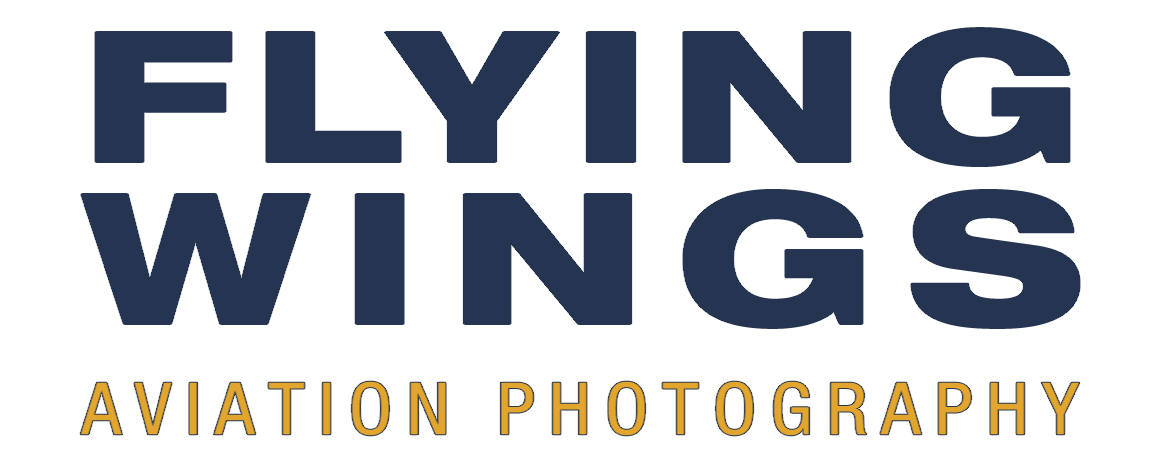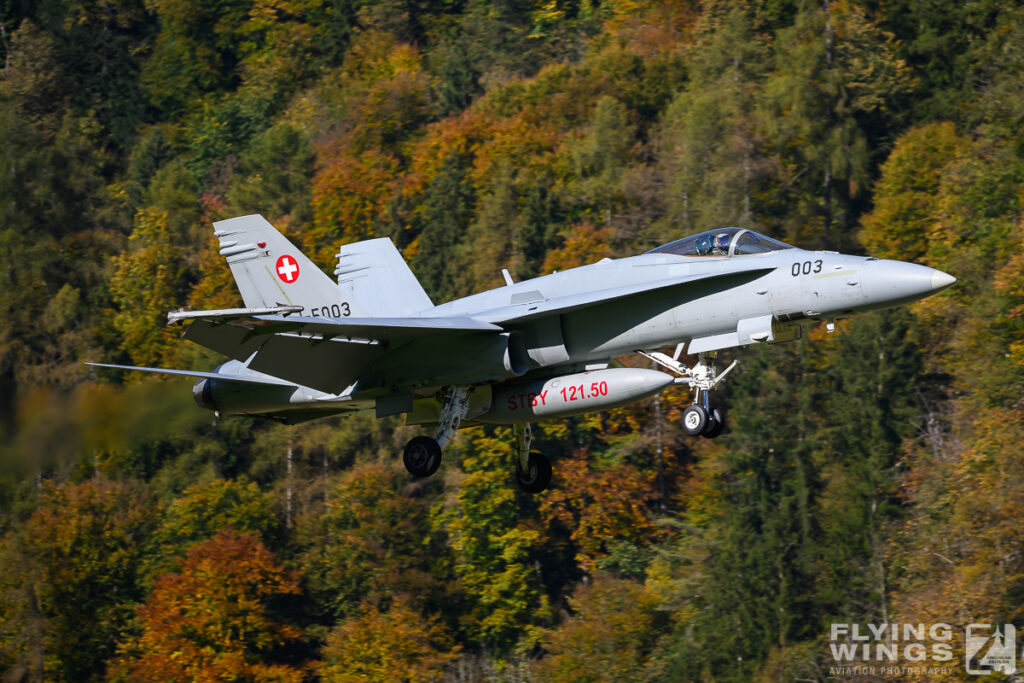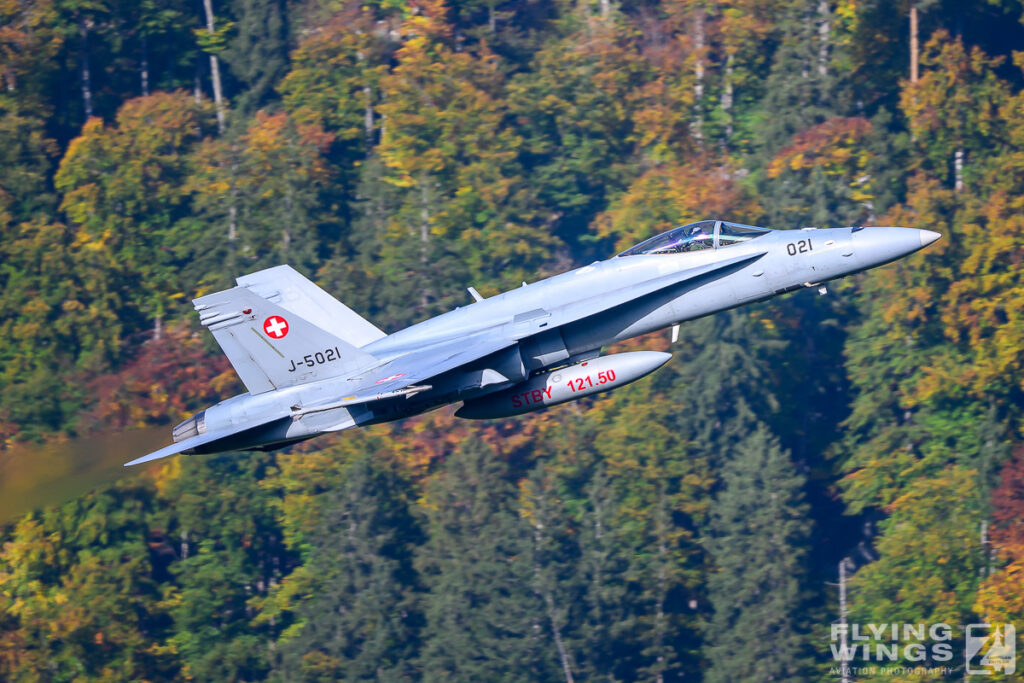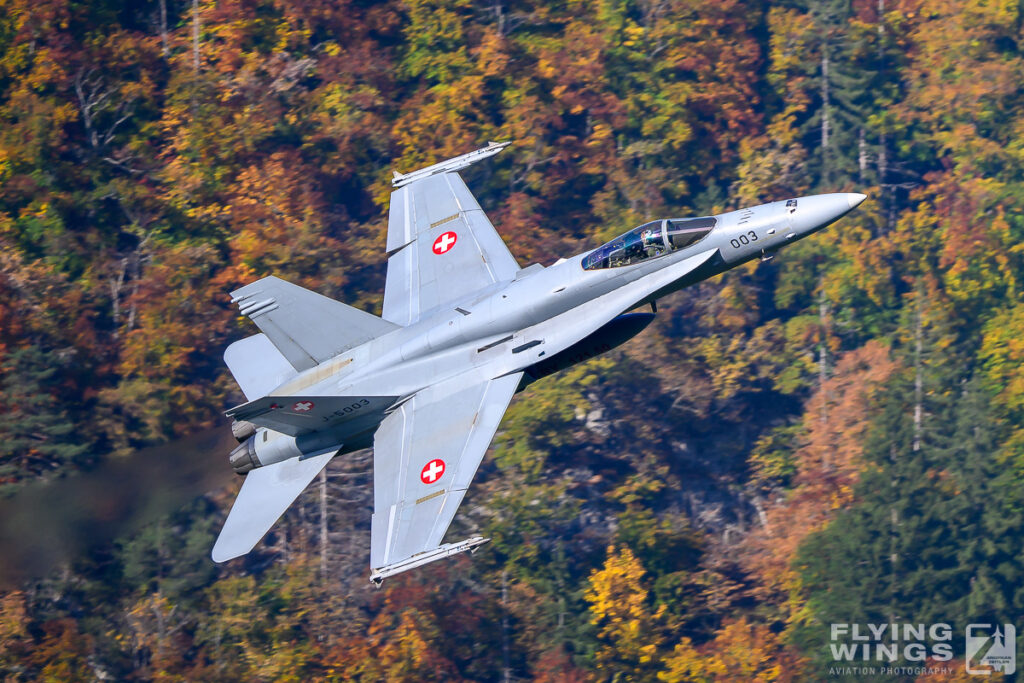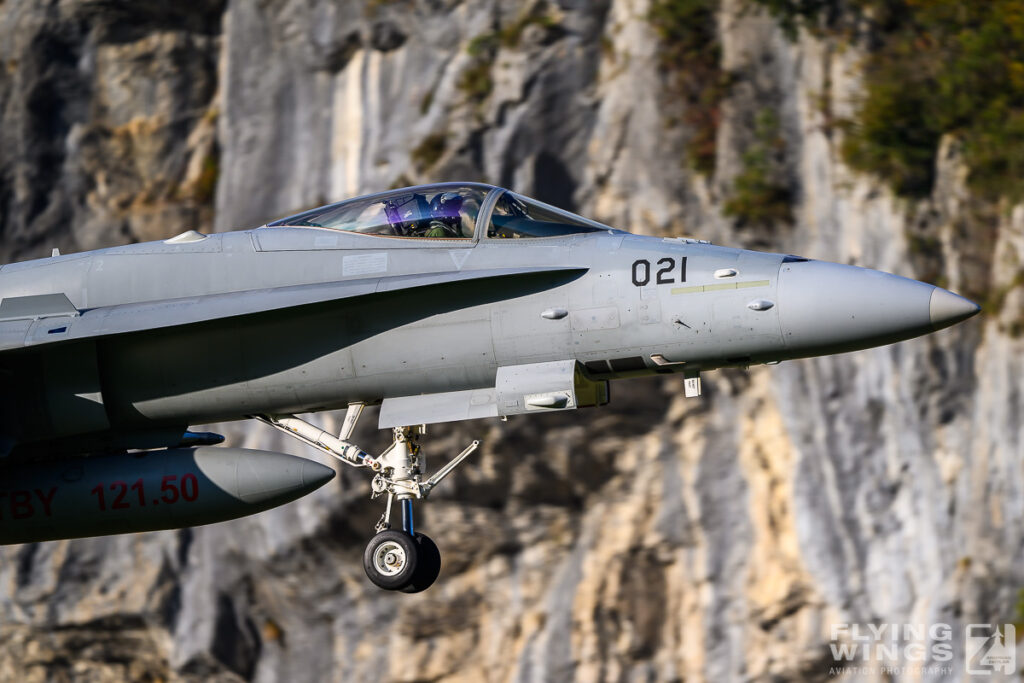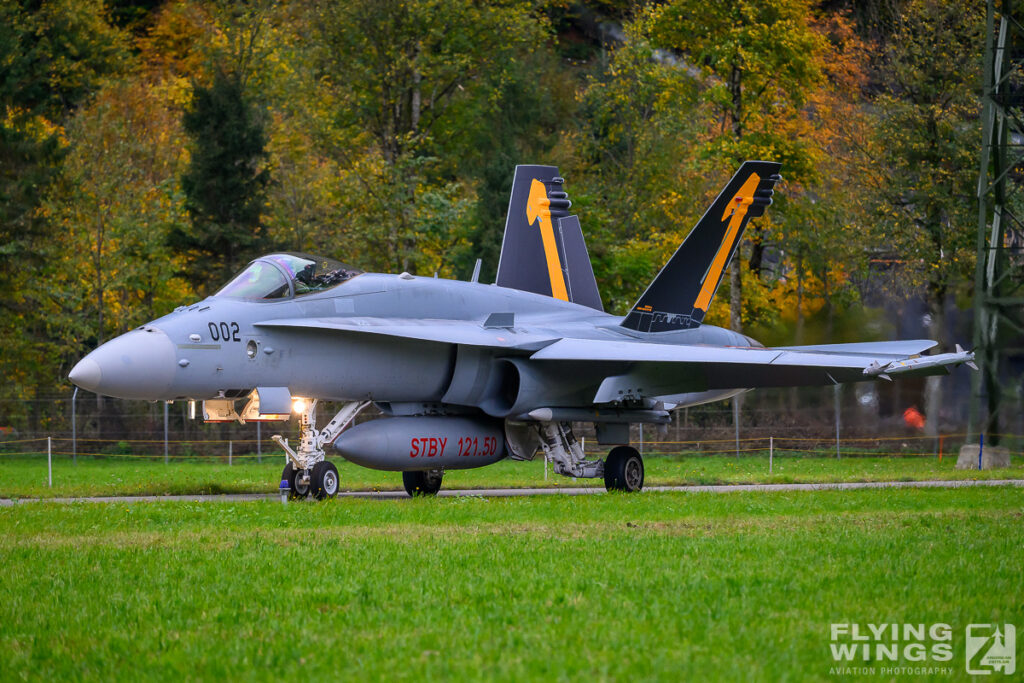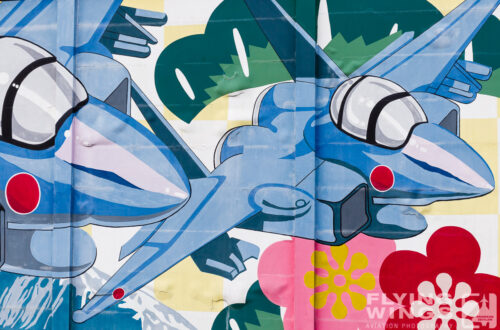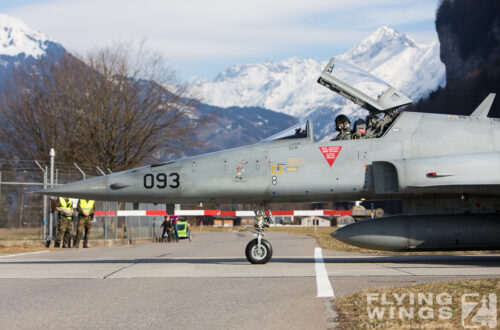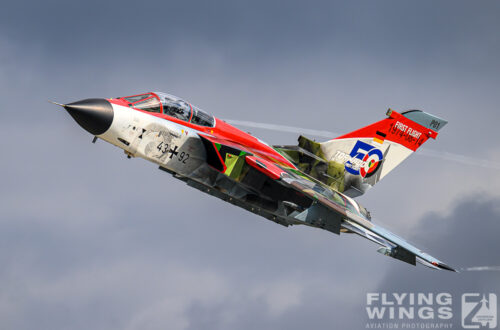
Swiss Fast Jets today
The Current Fighter Aircraft of the Swiss Air Force
The Swiss Air Force today rests on two enduring pillars: the Northrop F-5 Tiger II and the Boeing (McDonnell Douglas) F/A-18 Hornet. These two aircraft have defined the appearance and sound of Switzerland’s skies for decades – from the red-and-white formation of the Patrouille Suisse to the roaring twin afterburners of a Hornet leaping out of an alpine cavern. Both are American designs, both date from the 1970s, and both remain symbols of Swiss precision, neutrality, and aviation excellence.


Though modest in size, the Swiss Air Force is a tightly organized and highly professional force. Its mission remains clear: air policing, airspace surveillance, and national defense. The jets are on call 24 hours a day, 365 days a year – tucked away in the hardened mountain caverns of Meiringen, ready to launch at a moment’s notice. Yet behind this image of constant readiness lies growing financial pressure. Rising maintenance costs, the upcoming F-35 acquisition, and strict budget limits have all begun to squeeze operations. The financial strain has already reached the public eye: several airshows, open days, and flight demonstrations have been canceled or scaled back because the funds simply no longer stretch far enough to support them.
The Northrop F-5E/F Tiger II – The Workhorse of the Alps
When the F-5E Tiger II entered Swiss service in the late 1970s, it represented reliability and practicality rather than prestige. Switzerland procured the lightweight interceptor to operate effectively in alpine terrain, combining agility with low maintenance demands. Between 1978 and 1985, the country received 98 single-seat F-5Es (J-3001–J-3098) and 12 dual-seat F-5Fs (J-3201–J-3212), assembled locally at Emmen.

For many years the Tiger formed the backbone of the national air-defense system. As technology advanced, the type transitioned into training, target-towing, and display duties. Today, only a small number remain airworthy. Two grey F-5E and three dual-seat F-5F aircraft are still operational, in addition to the Patrouille Suisse fleet of red-and-white display Tigers. Operationally, these remaining aircraft belong to Fliegerstaffel 19, based at Emmen, which now operates the last of the Swiss Tigers for training and limited aggressor duties.
Earlier this year, the Air Force had considered relocating some Tigers to Meiringen for target-towing missions in autumn, but this plan has since been cancelled. Instead, they are now used exclusively as aerial targets during training engagements for Hornet pilots from Meiringen and Payerne. The F-5’s formal end of service is set for 2027, after which the type will finally retire from Swiss skies.

I recently payed a short visit to Emmen Air Base, where a few of the remaining Tigers were still active. Seeing one of the rare grey F-5Es taking off in front of the hangars was a special moment – a fleeting glimpse of an aircraft nearing the end of its Swiss story. With only a handful of airworthy examples left, Emmen has become practically the only location in the country where the Tiger can still be photographed with any regularity.
The Boeing (McDonnell Douglas) F/A-18C/D Hornet – Backbone of the Air Force
The F/A-18 Hornet brought Switzerland into the digital jet age. Following a demanding evaluation process, the Swiss government selected the American multirole fighter in 1993, preferring it over competitors such as the F-16, Mirage 2000-5, and Gripen. Between 1996 and 1999, 34 single-seat F/A-18Cs and 12 dual-seat F/A-18Ds entered service, assembled locally in Emmen under the supervision of RUAG and armasuisse.
Since then, the Hornet has become the true workhorse of Swiss air defense. It handles air-policing missions, intercepts civil airliners that lose radio contact, and protects Swiss airspace during major events such as the World Economic Forum in Davos. The aircraft operate from Payerne and Meiringen, flown by squadrons including Fliegerstaffel 11 „Tigers”, Fliegerstaffel 17 „Falcons”, and Fliegerstaffel 18 „Panthers”.

Technically, the Hornet is a powerful yet refined fighter. Its two General Electric F404-GE-402 engines provide nearly 80 kN of thrust, pushing the jet beyond Mach 1.8. The AN/APG-73 radar tracks multiple targets simultaneously, while the Link 16 data link integrates it into a real-time tactical network. Its armament includes Sidewinder and AMRAAM missiles, precision bombs, and an internal M61 Vulcan cannon. Since 2020, the Upgrade 25 program has been modernizing the fleet with improved avionics, radar, and electronic-warfare systems, ensuring operational capability into the early 2030s.
Field Impressions from Meiringen
During my recent visit to Meiringen Air Base, home of Fliegerstaffel 11, I was fortunate to capture the squadron’s newly painted “Tiger Jet”, a beautifully marked F/A-18C carrying the Staffel’s distinctive tiger-tail art. On one of the days the aircraft even launched for training sorties armed with live AIM-120 AMRAAM missiles – a rare sight that underlined the operational realism of the training flights in the Haslital.
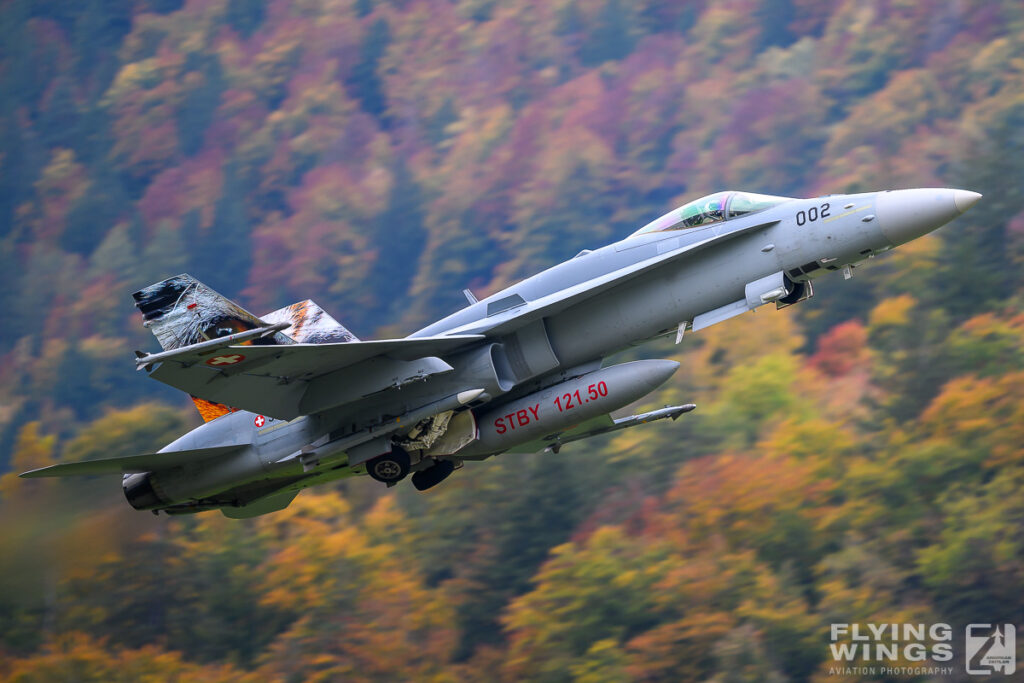
The valley itself was a spectacle: the Haslital was glowing in full autumn colours, framing the thunderous take-offs of the Hornets with golden larch trees and misty mountain slopes. For aviation photographers, Meiringen is a dream location – the famous Alpine Airbase where jets emerge straight from rock-carved shelters into open air. Watching a Hornet ignite its afterburners just metres away is an unforgettable experience. Indeed, for anyone passionate about military aviation photography, a visit to Meiringen is an absolute must.
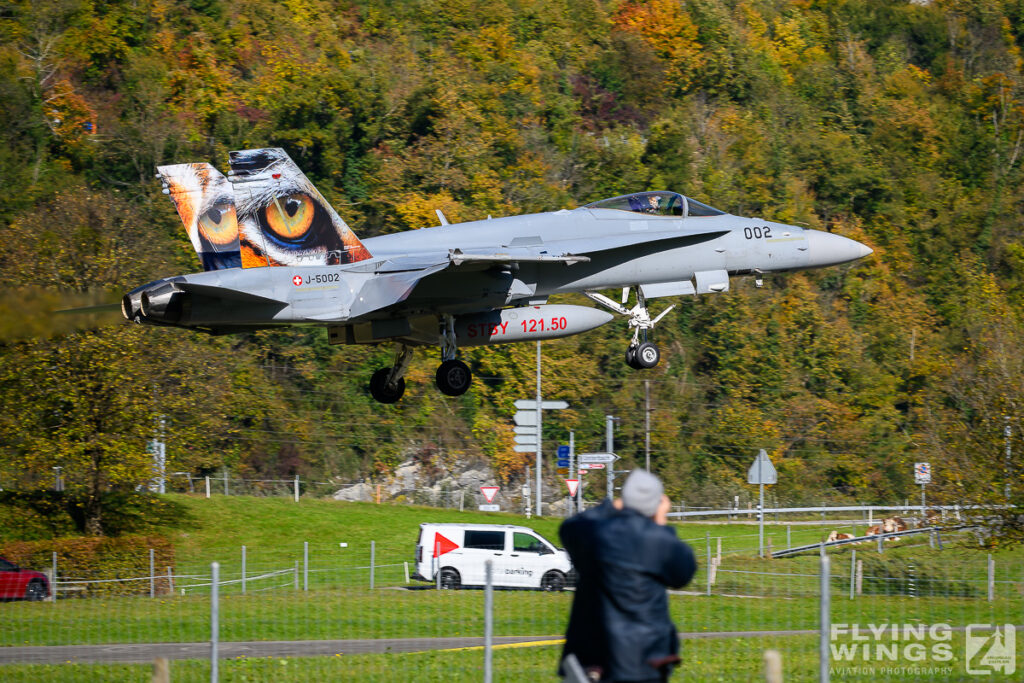

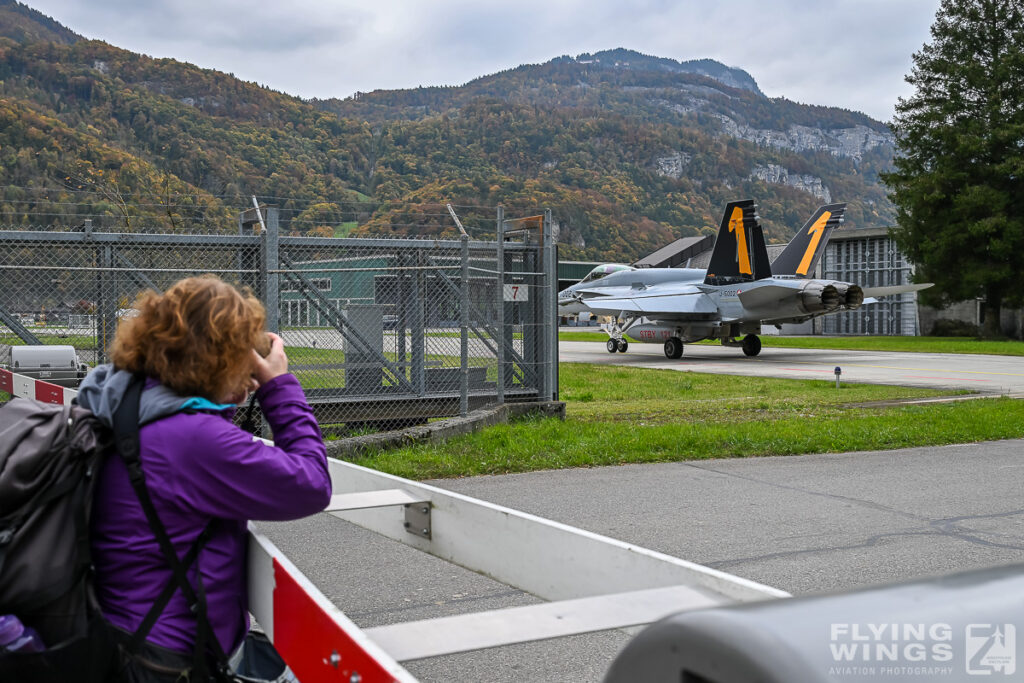
Accidents, Transitions, and Financial Pressure
Over its service life, the Hornet fleet has suffered a few tragic losses. In 1998, an F/A-18D (J-5231) crashed near Crans-Montana, killing both crew members. In 2013 another Hornet was lost near Alpnach, again with two fatalities. In 2016, a single-seat F/A-18C (J-5022) struck the mountainside at the Susten Pass after a miscommunication on altitude clearance. Each of these accidents led to procedural changes, stricter weather limits, and improved cockpit training.
Looking ahead, Switzerland plans to replace the Hornet fleet with 36 F-35A Lightning II aircraft starting in the late 2020s. However, the acquisition has proven more expensive than initially expected. The program’s cost, once estimated at six billion Swiss francs, has risen significantly, generating heavy financial strain on the defense budget. The resulting austerity measures have reduced the scope of public events and airshows, even limiting opportunities for the Patrouille Suisse to perform abroad.
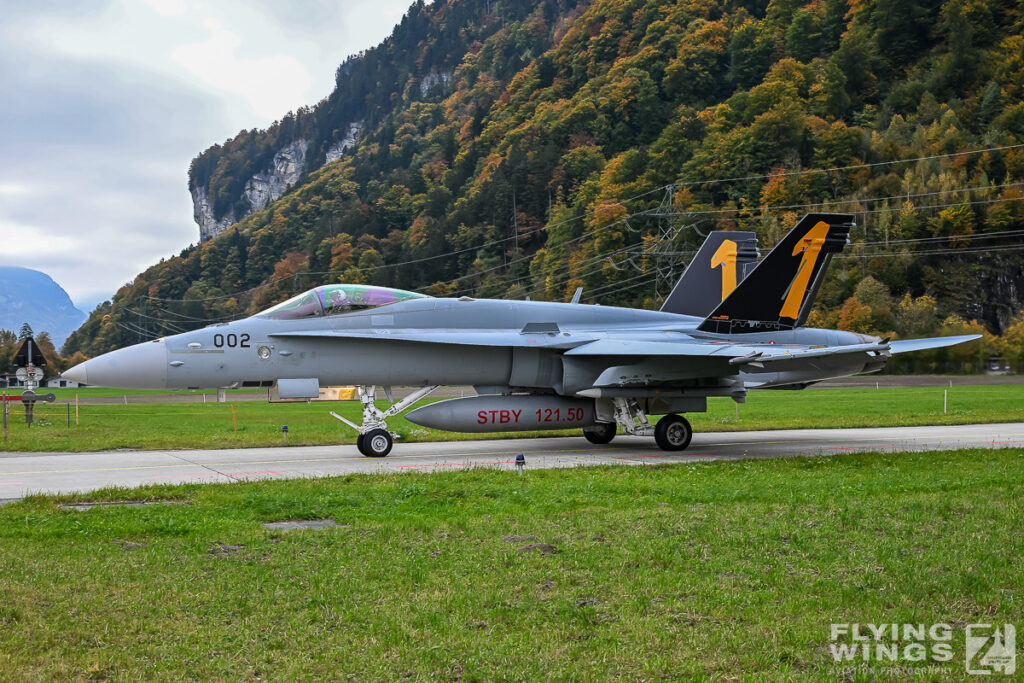
Continuity in the Skies
Together, the F-5 Tiger and the F/A-18 Hornet embody two generations of Swiss aviation: the analog and the digital, the minimalist and the multirole. The Tiger stands for a time when flying meant feeling the machine directly, when the pilot’s hands and reflexes mattered more than sensor fusion. The Hornet embodies precision, discipline, and a blend of technology and training that has kept Switzerland’s airspace secure for nearly three decades. Both continue to serve – one in its twilight years, the other entering its final decade before the F-35 takes over.

Yet the spirit of Swiss aviation endures. In Emmen, a few faithful Tigers still take to the skies, while at Meiringen the Hornets roar between autumn-coloured ridges, keeping watch over one of the world’s most spectacular military airfields. These sights, captured during recent photography trips, reflect not only machines of metal and noise but a legacy of independence and mastery of the air that remains distinctly, proudly Swiss.
Swiss Air Force Fast Jets in Meiringen & Emmen 2025 – Photo Gallery


